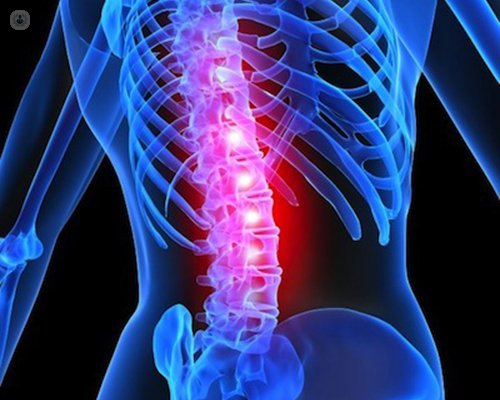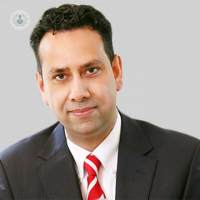Dynamic spinal stabilisation: a new technique for reinforcing the spinal column
Written by:What is dynamic spinal stabilisation? Dynamic stabilisation is a technique used for strengthening the spinal column with the aim of controlling vertebral mobility, while allowing the patient as much spinal functionality as possible and avoiding further damage to the spinal cord or spinal roots. Leading consultant orthopaedic surgeon, Mr Mo Akmal explains how it works, and the new techniques in spinal stabilisation.

There are a number of differing vertebral stabilisation devices available, where the vertebrae are connected to each other using mobile supports. When these techniques are unsuccessful or are not viable, the vertebrae are fused together, which prohibits any movement of the vertebrae.
New techniques in vertebral fixation
One of the most important advances in the treatment of conditions caused by the wear and tear of the vertebral column has recently been developed. It is a dynamic stabilisation system that allows the patient to maintain mobility.
The system for dynamic spinal stabilisation
The system consists of titanium screws that are placed in the pedicles of the vertebrae and its main feature is the profiled bars made of plastic that are attached to the screws, which allow flexibility of movement and, therfore, greater patient mobility.
This material and the pioneering technique used for its implantation allows the stabilisation of the corresponding part of the spine, releasing it from part of its load, and ensuring a level of mobility unable to be achieved previously.
This is a revolutionary method because with the current technique the affected section of the column is stiffened permanently and irreversibly.
Dynamic spinal stabilisation: the benefits
Important structures of the column are kept active, but safe from overload peaks. Even the treated segment can practically regain its original functionality without additionally overloading the surrounding segments.
In addition, this intervention is minimally invasive and maintains its own structures for a long time, even allowing the option of further definitive stiffening if necessary. A complete advance in the treatment of diseases caused by the wear and tear of the vertebral column.
If you wish to make an appointment with an expert in spinal fusion, you can do so here.



